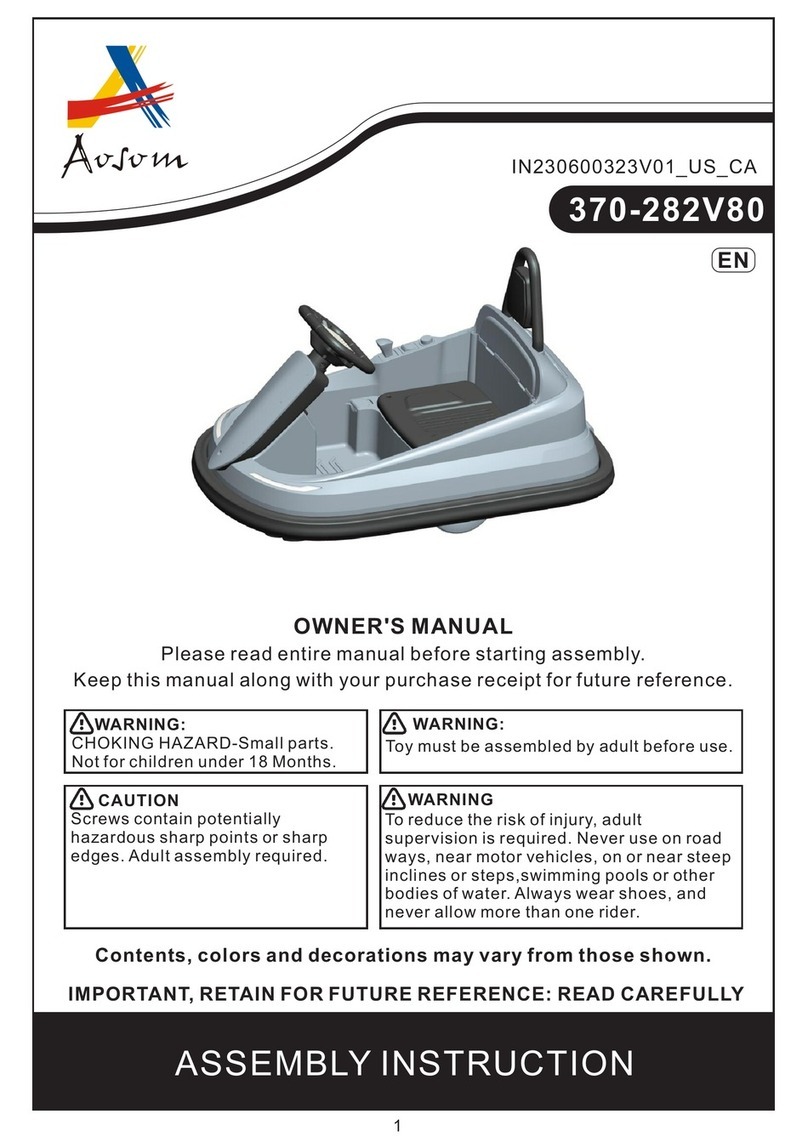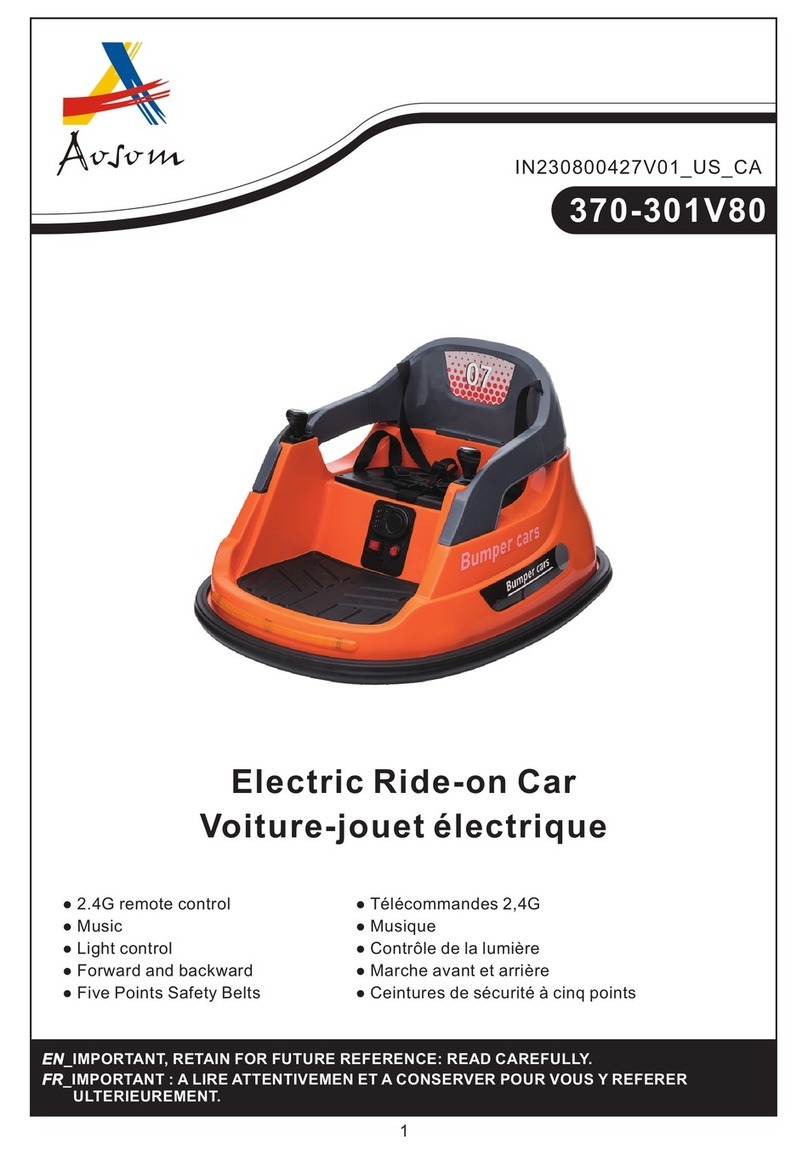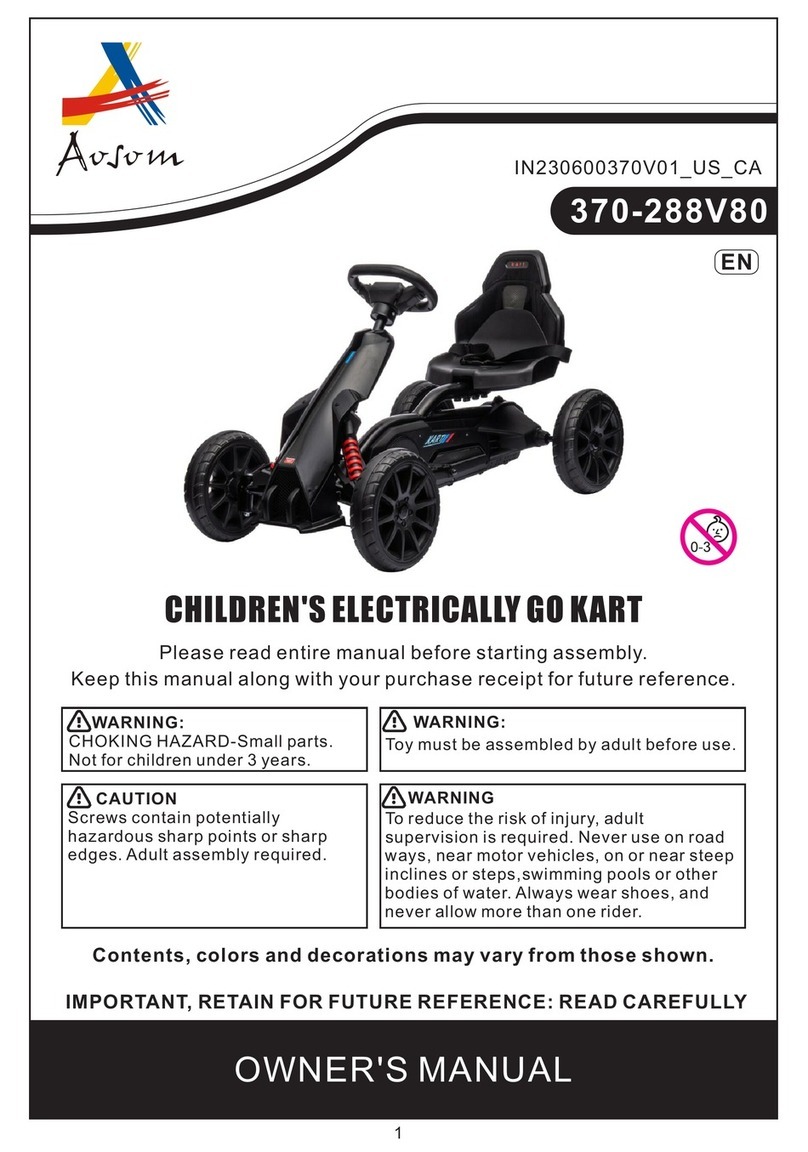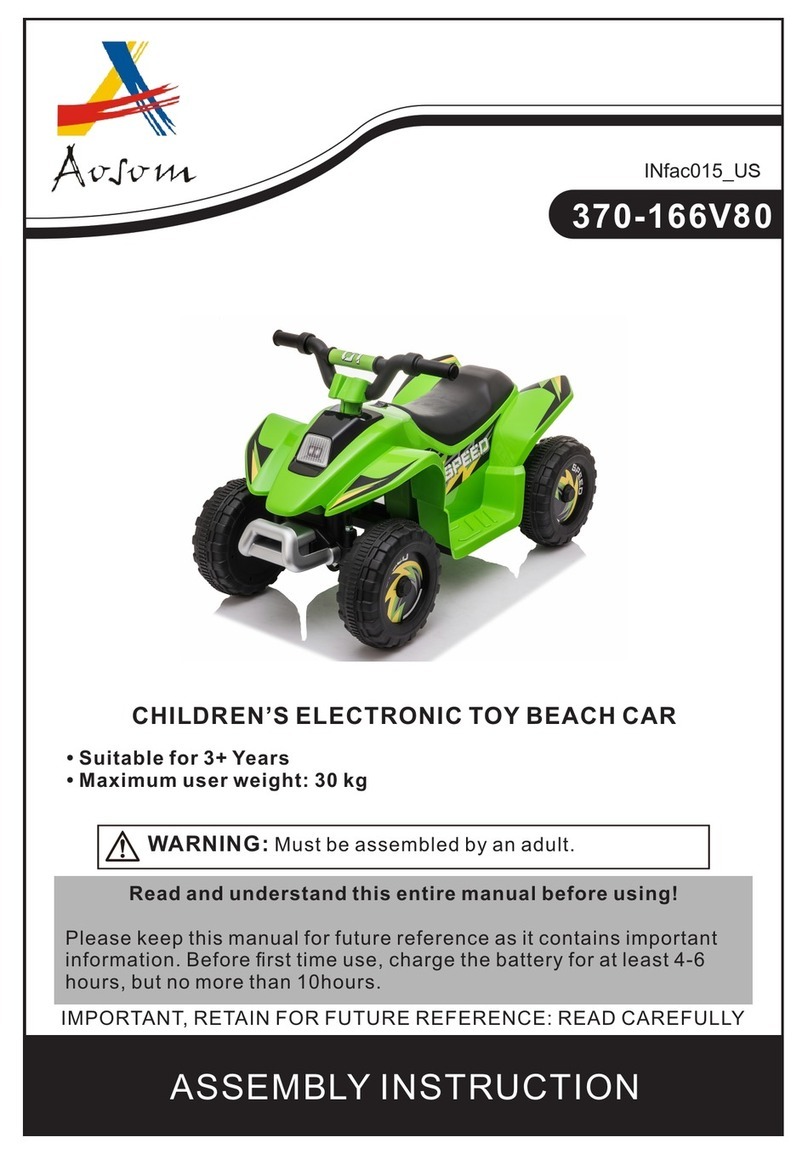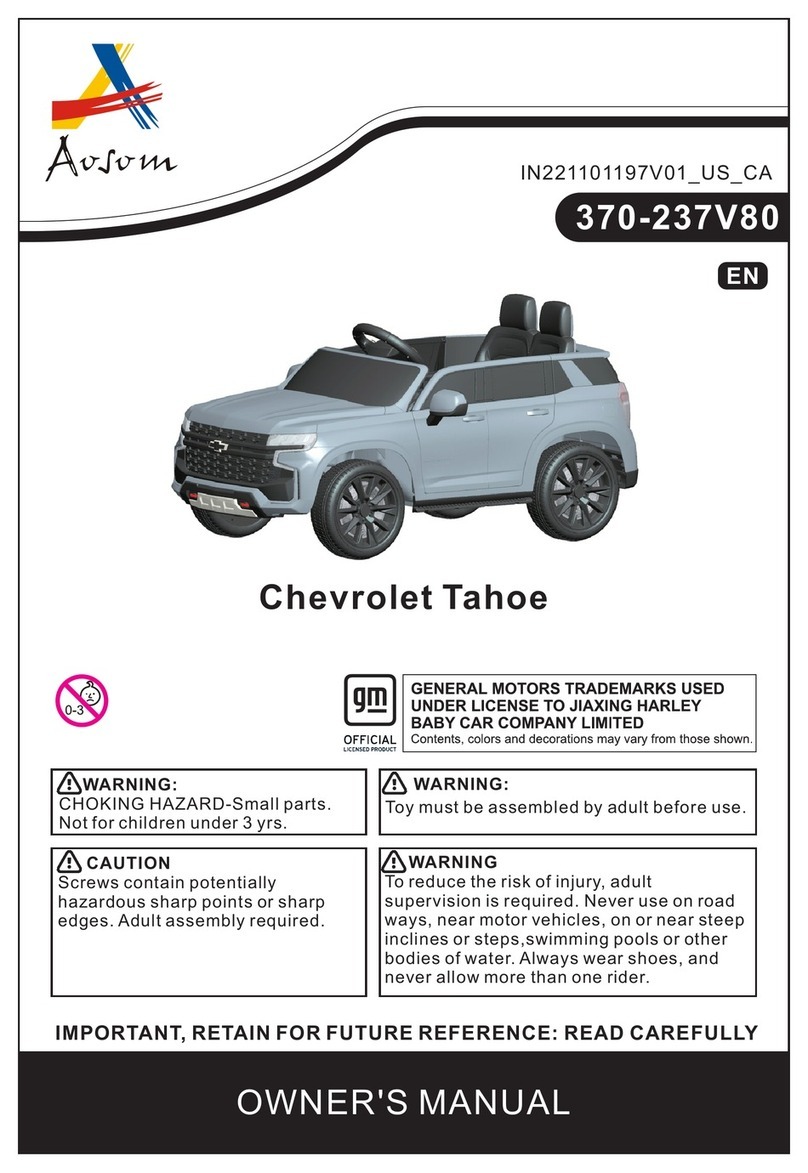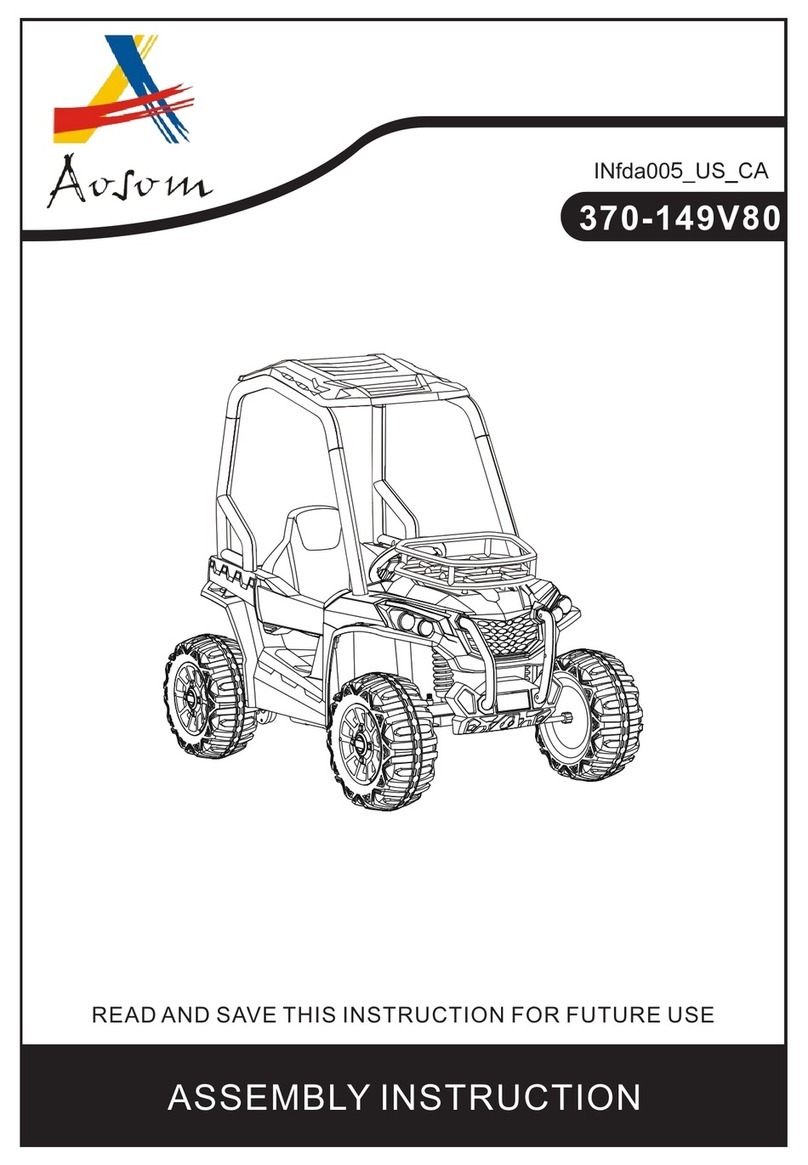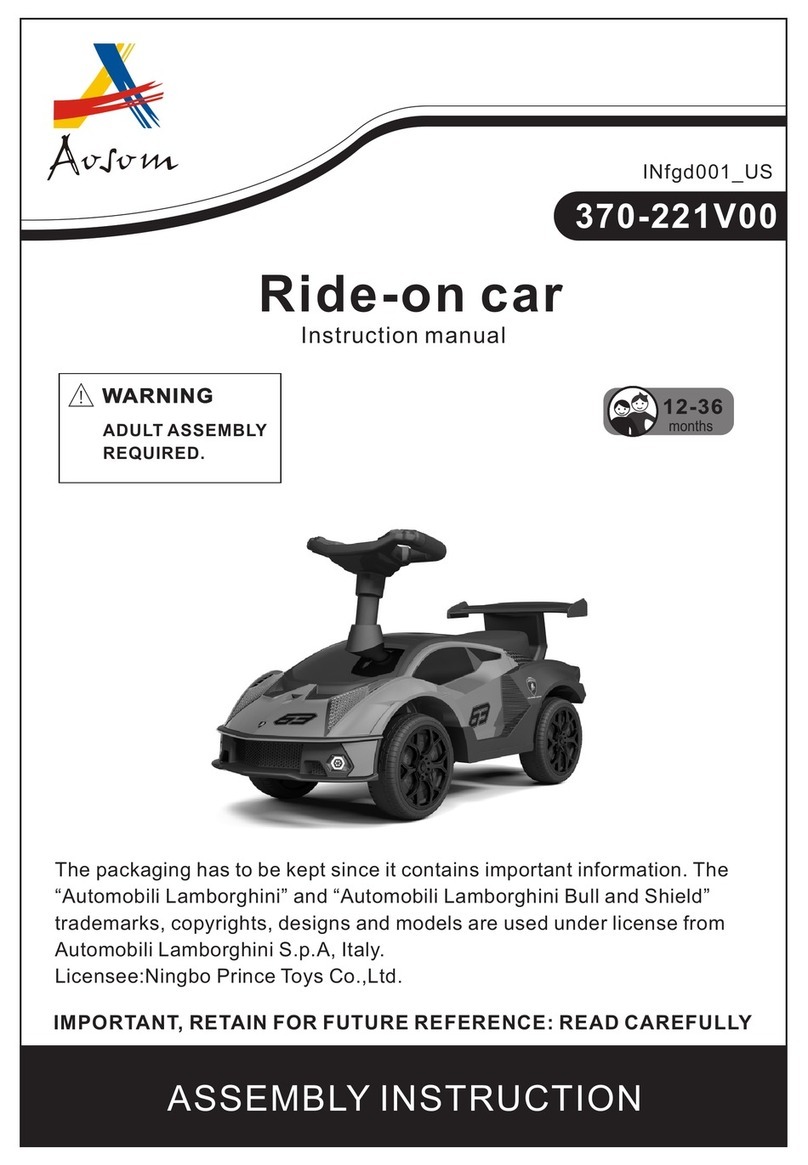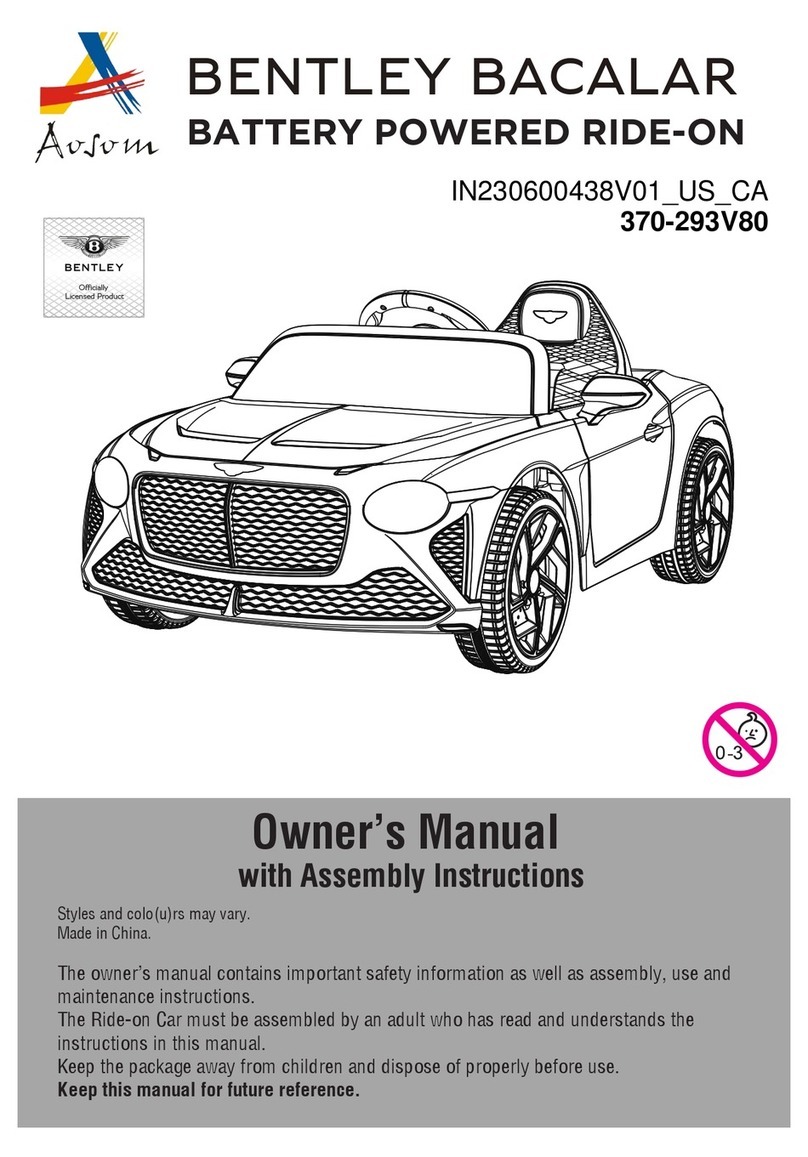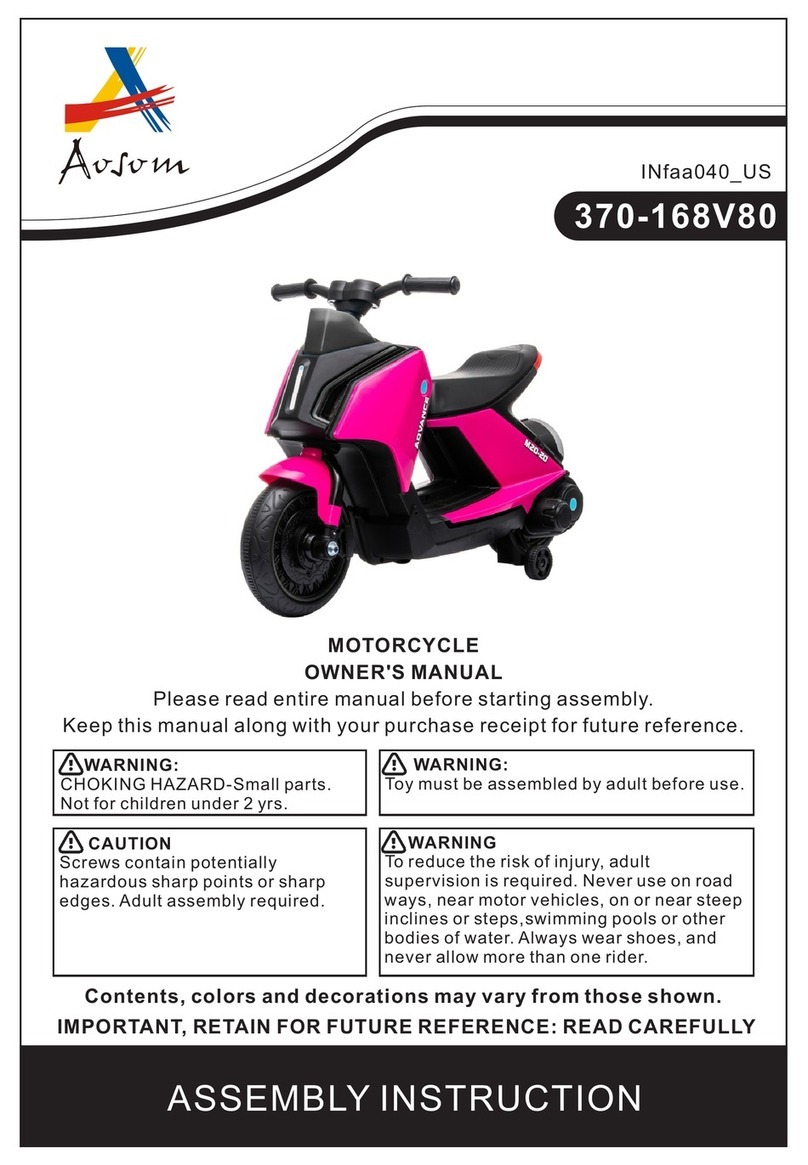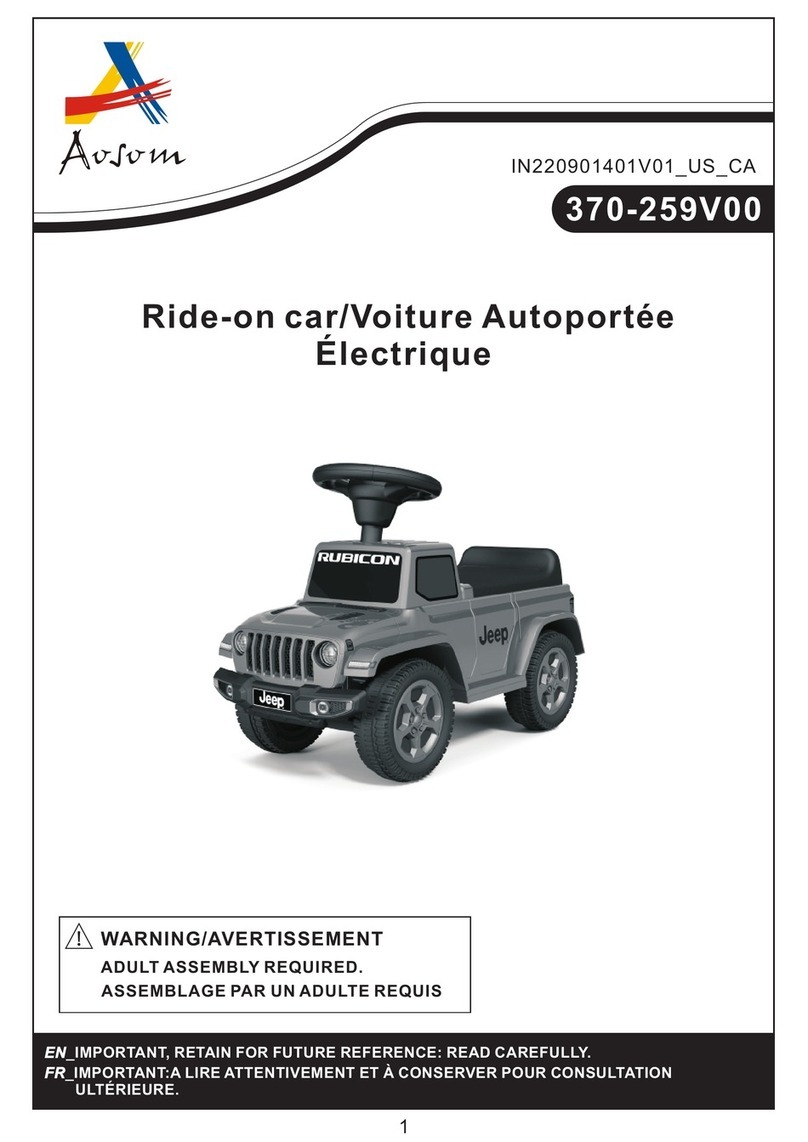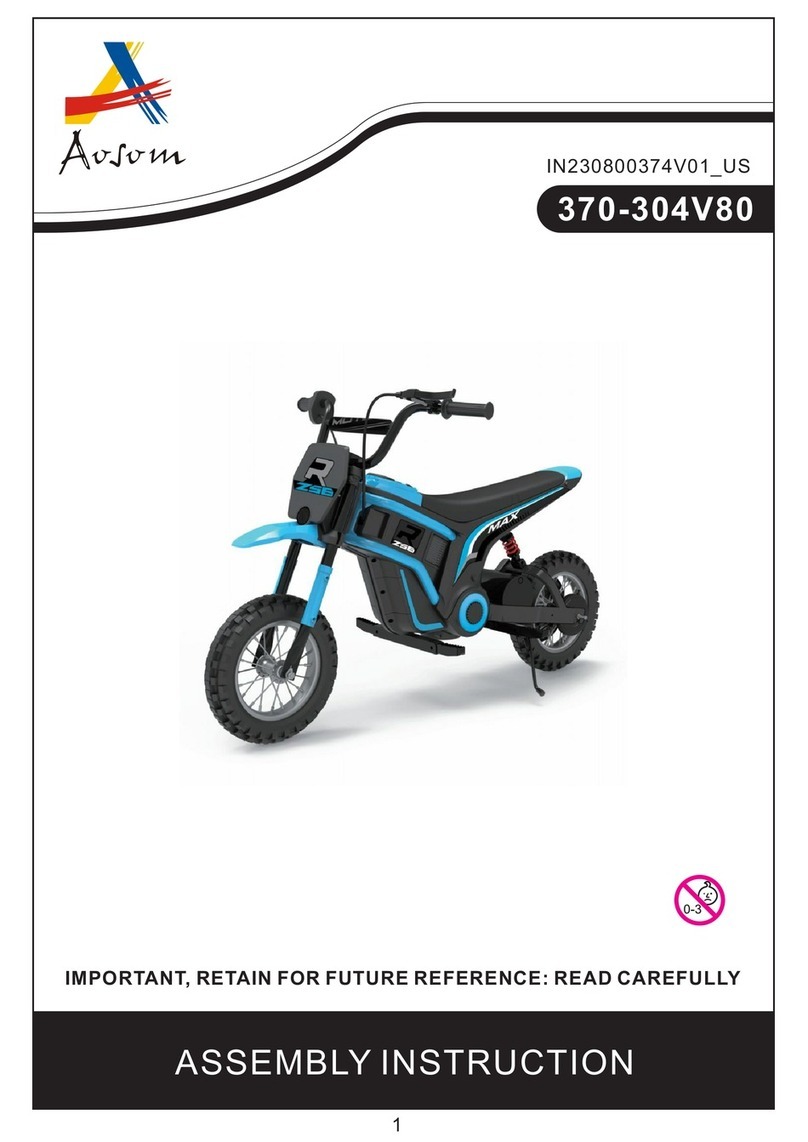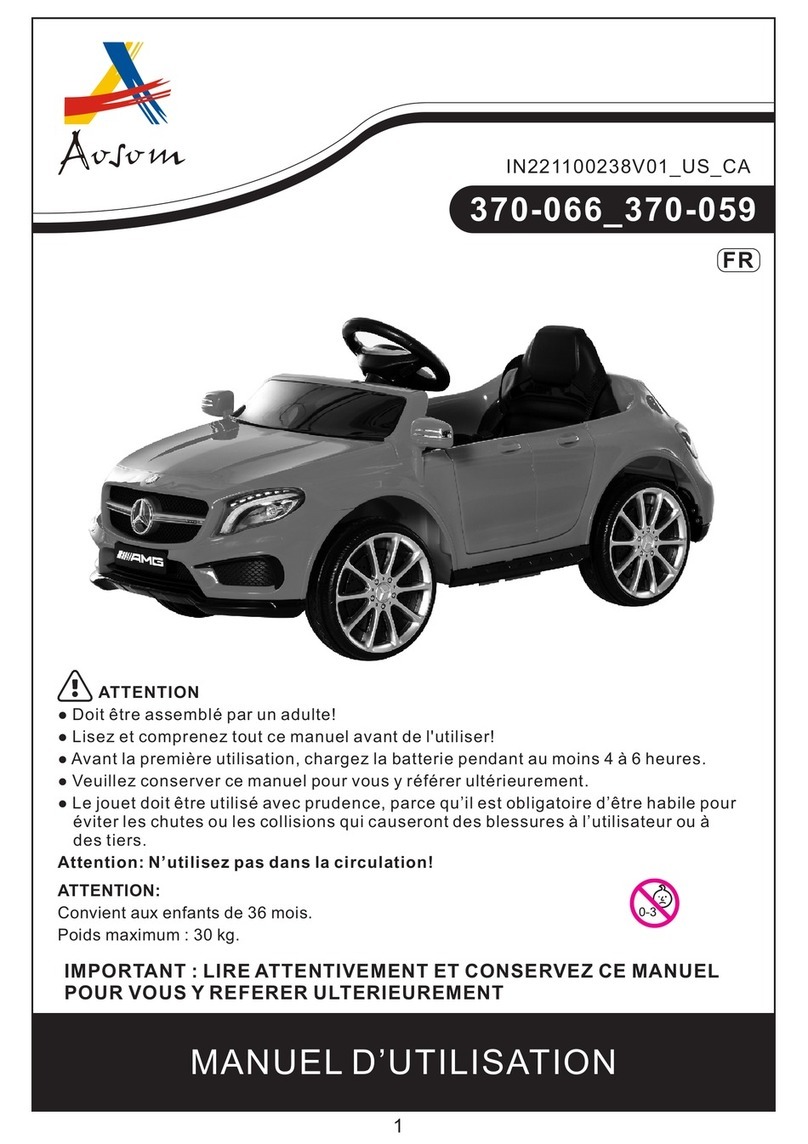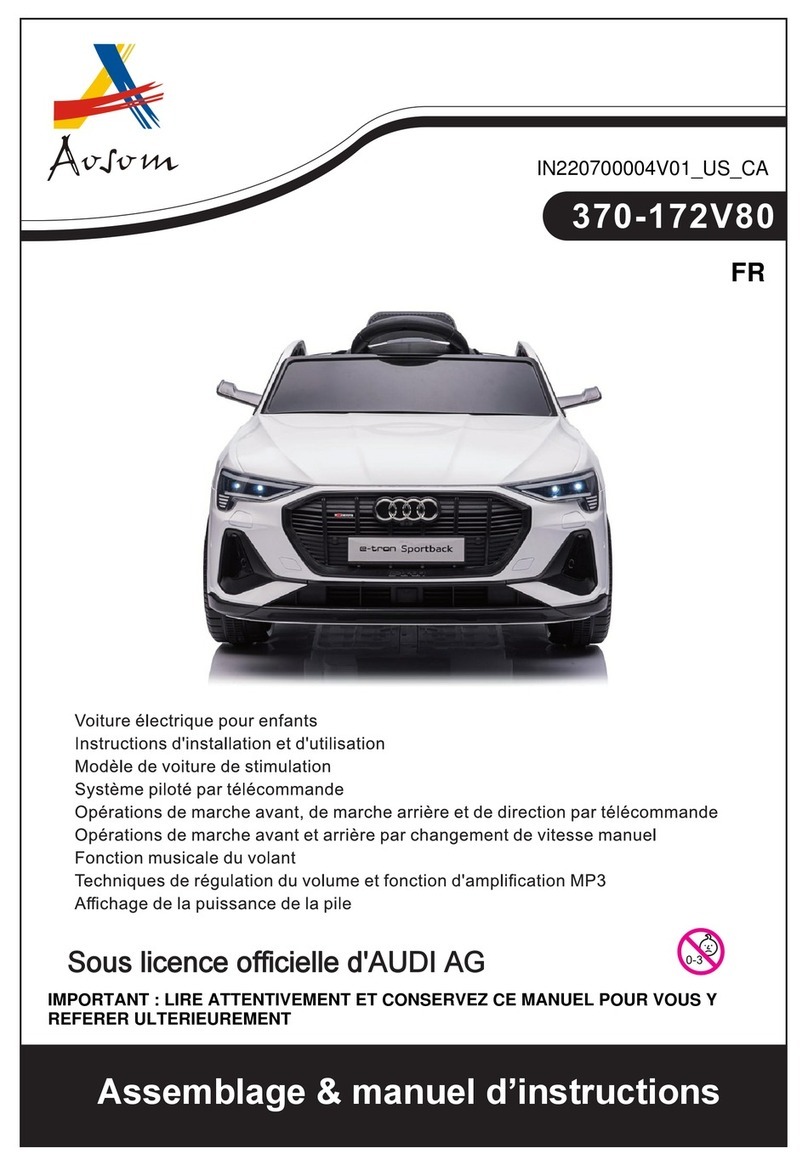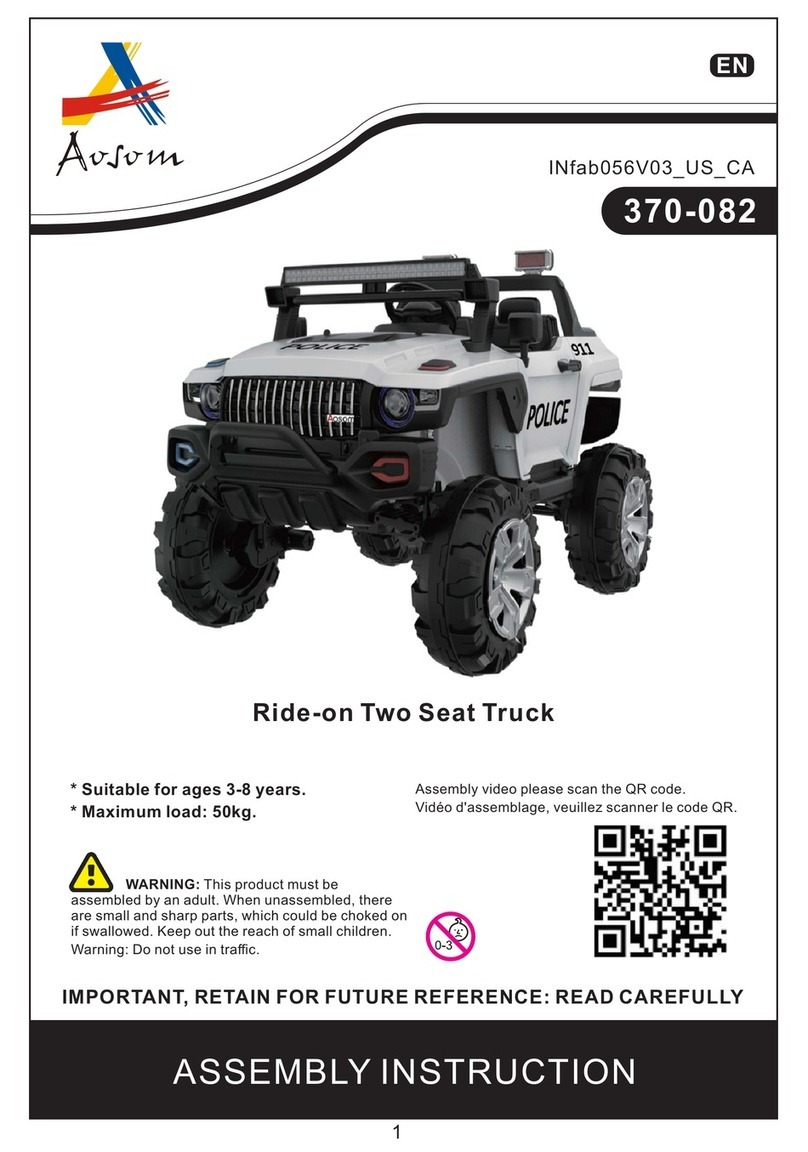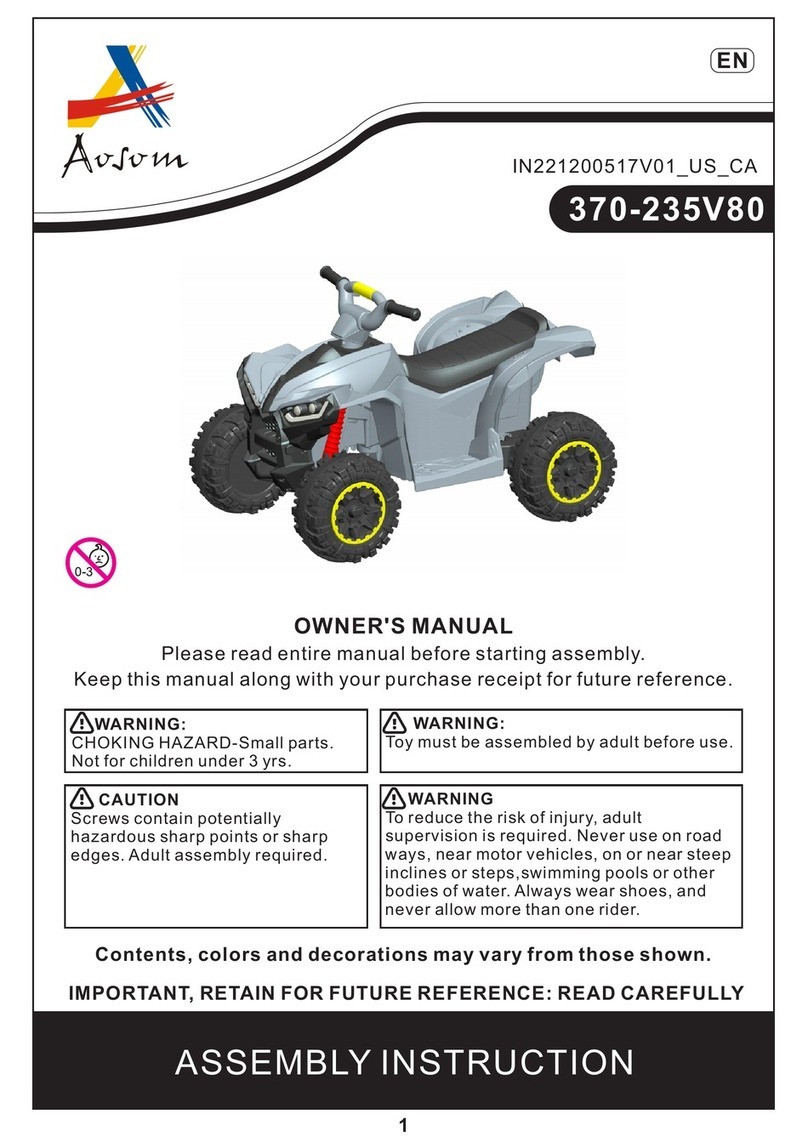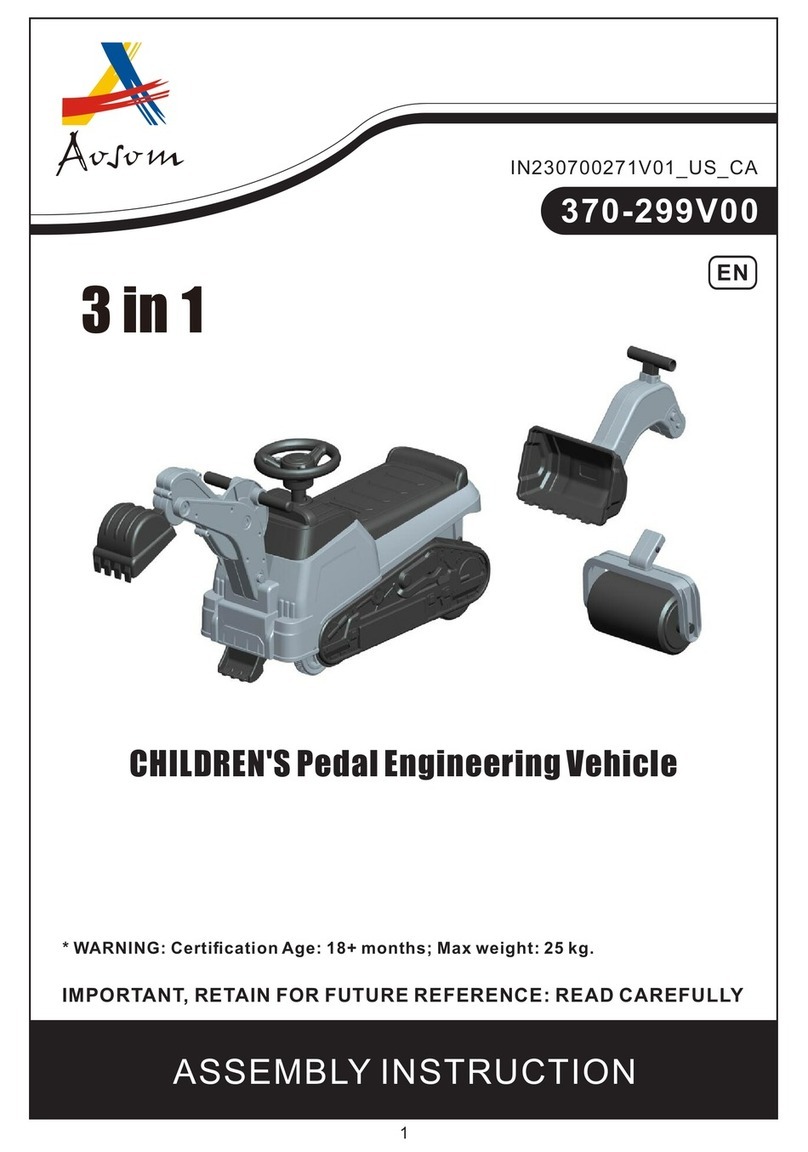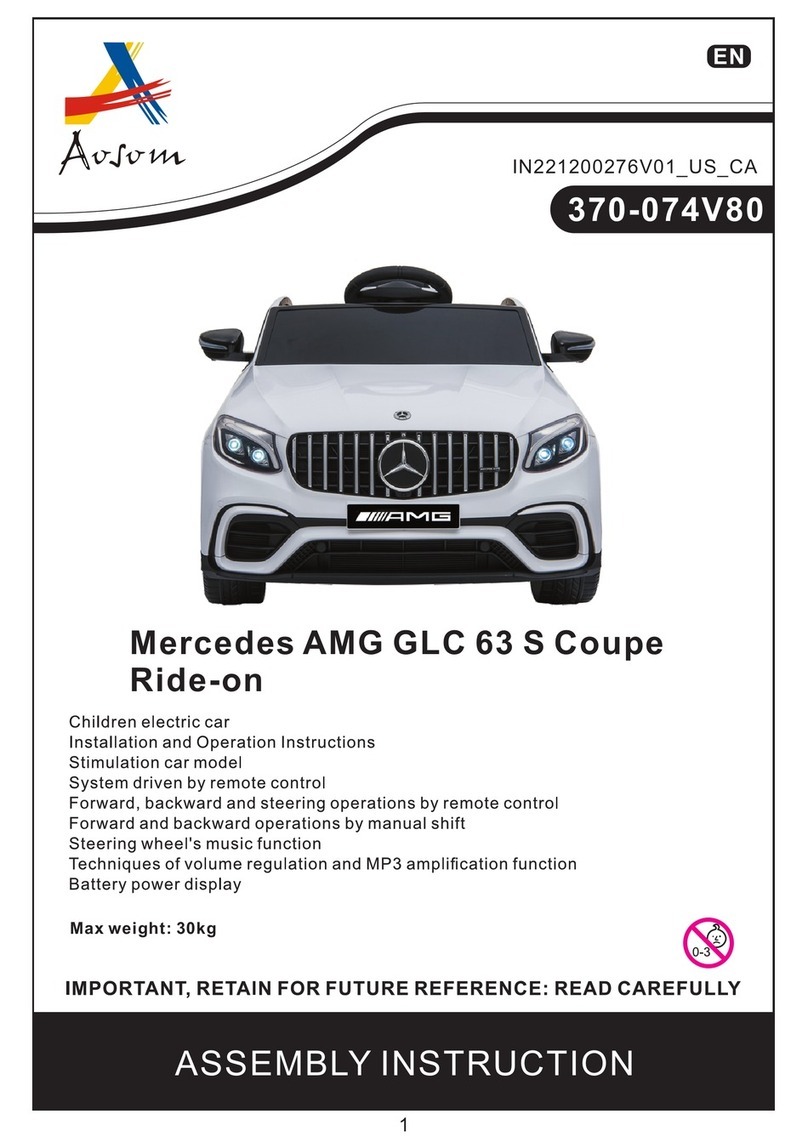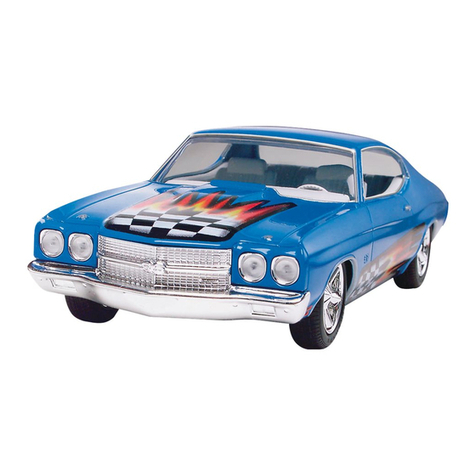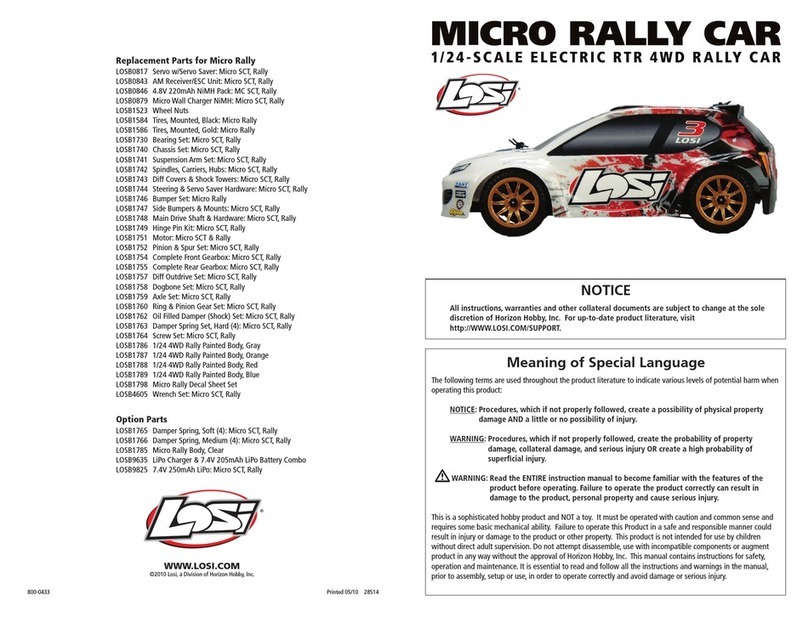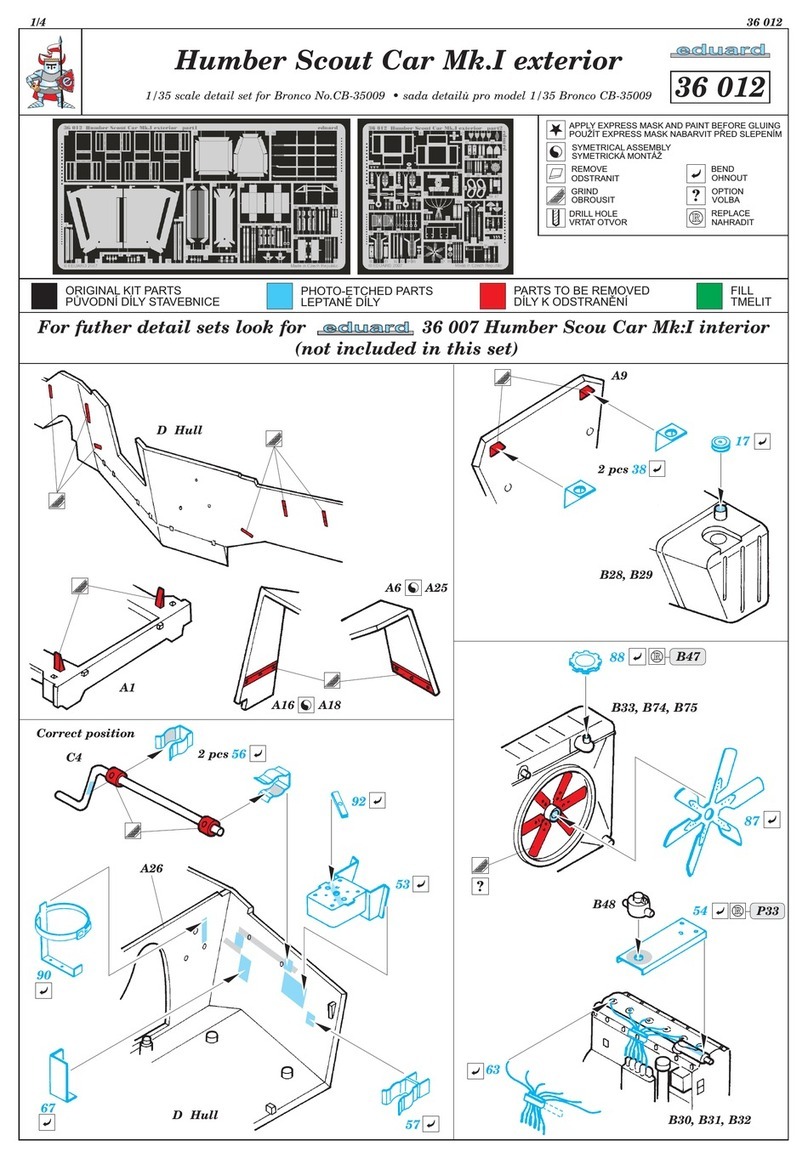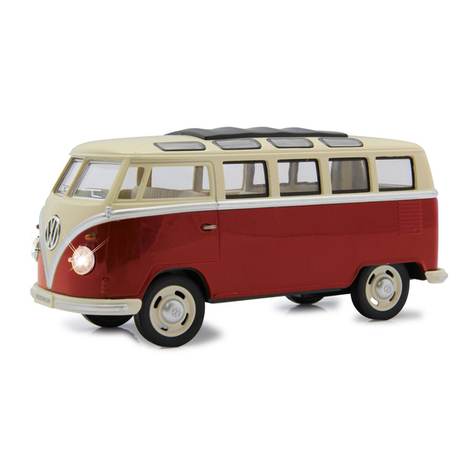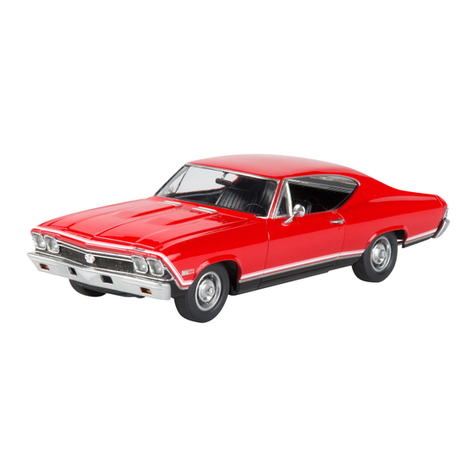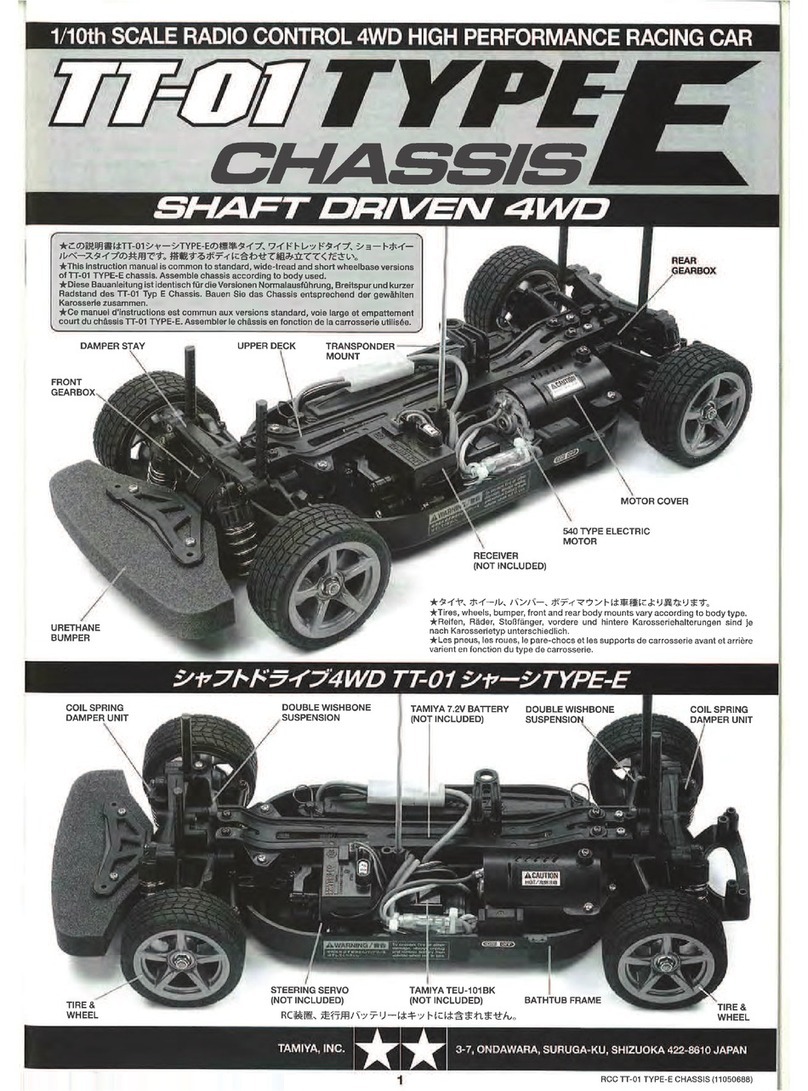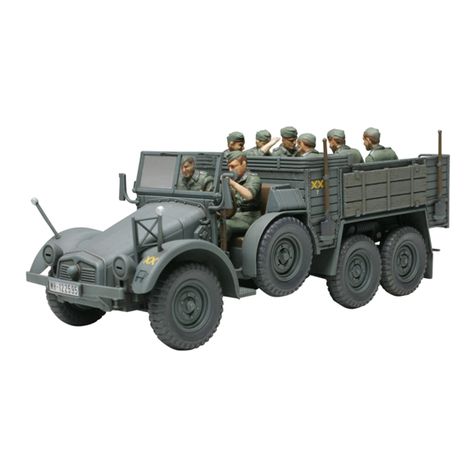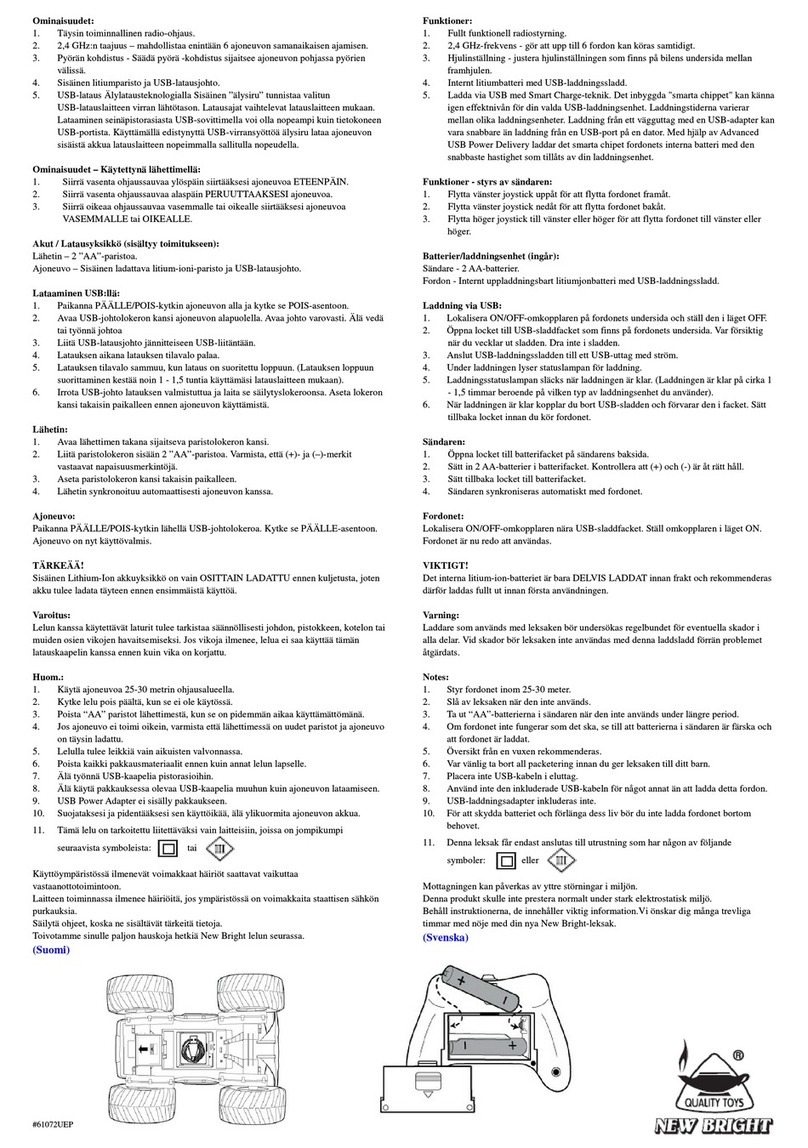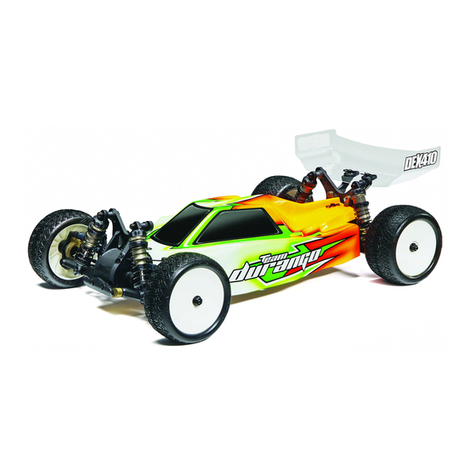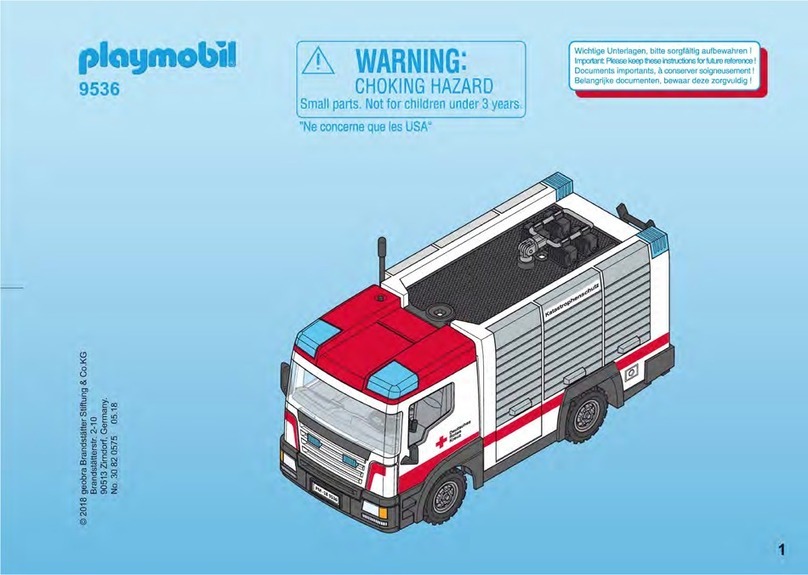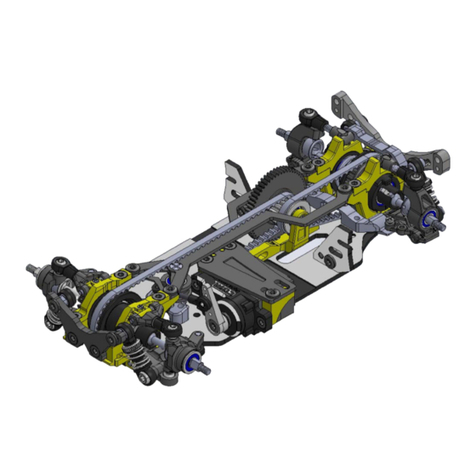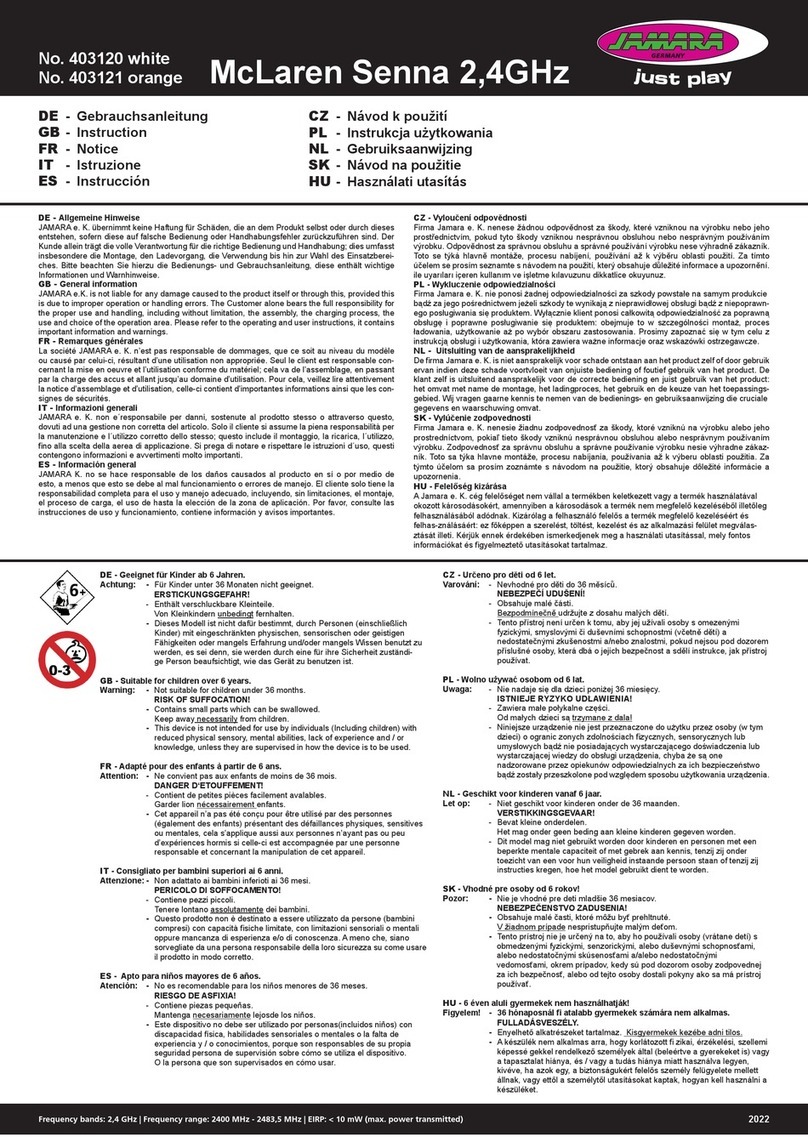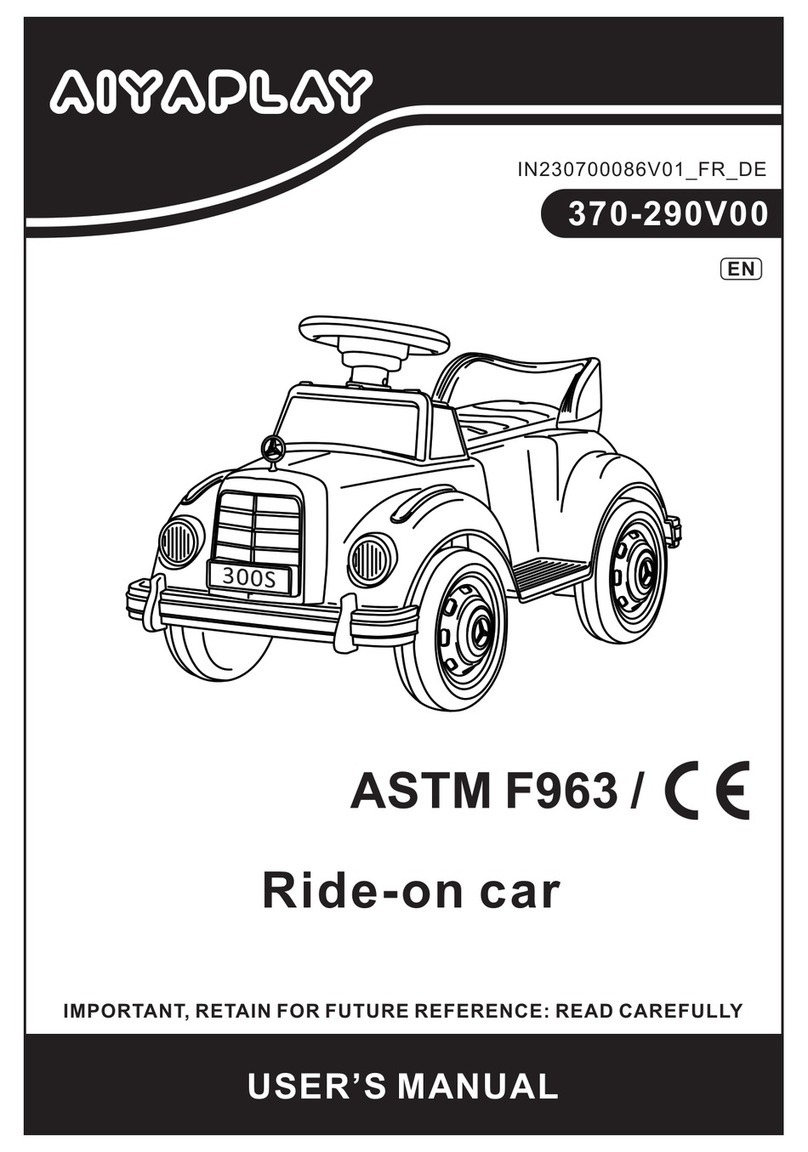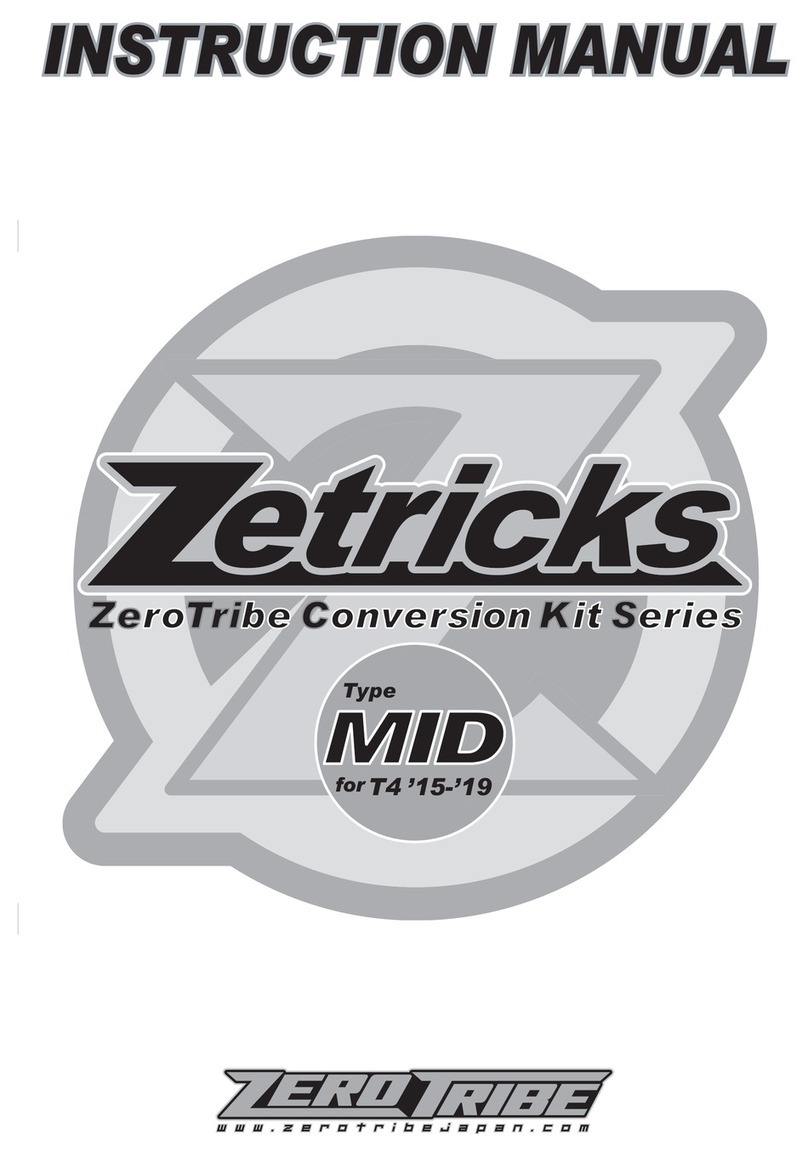
PREVENT FIRE AND ELECTRIC SHOCK:
- Use the only rechargeable battery and charger supplied with your vehicle.
- NEVER substitute the battery or the charger with another brand. Using another battery or
charger may cause a fire or explosion.
- Do not use the battery or charger for any other product. Overheating, fire or explosion could
occur.
- NEVER modify the electric circuit system. Tampering with the electric system may cause a
shock, fire or explosion or may permanently damage the system.
- Do not allow direct contact between battery terminals. Fire or explosion can occur.
- Do not allow any type of liquid on the battery or its components.
- Explosive gasses are created during charging. Do not charge near heat or flammable
materials. Charge the battery in a well- ventilated area ONLY.
- NEVER pick up the battery by the wires or charger. Damage can occur to the battery and
may cause a fire. Pick up the battery by the case ONLY.
- Charge the battery in a dry area ONLY.
●Battery posts, terminals and related accessories contain lead and lead compounds,
chemicals known to the State of California to cause cancer and reproductive harm. Wash
hands after handling.
●Do not open the battery. Battery contains lead acid and other materials that are toxic and
corrosive.
●Do not open the charger. Exposed wiring and circuitry inside case may cause electric shock.
●ONLY adults may handle or charge the battery. NEVER allow child to handle or charge the
battery. Battery is heavy and contains lead acid (electrolyte).
●Do not drop the battery. Permanent damage to the battery could occur or cause serious
injury.
●Before charging the battery, check for wear or damage to the battery, charger, its supply cord
and the connectors. DO NOT charge the battery if any damage to parts has occurred.
●Do not allow the battery to drain completely. Recharge the battery after each use or once a
month if not used regularly.
●Do not charge battery upside down.
●Always secure the battery with the bracket. Battery can fall out and injure a child if vehicle
tips over.
●It is parents' responsibility to check main parts of the toy before using, Must regularly
examine for potential hazard, such as the battery, charge, cable or cord, plug, screws are
fastening enclosure of other parts and that in the event of such damage, the toy must not be
until that damage had been properly removed. Make sure the plastic parts of the vehicle are
not cracked or broken.
●Occasionally use a lightweight oil to lubricate moving parts such as wheels.
●Park the vehicle indoors or cover it with a tarp to protect it from wet weather.
●Keep the vehicle away from sources of heat, such as stoves and heaters. Plastic parts may
melt.
●Recharge the battery after each use. Only an adult can handle the battery. Recharge the
battery at least once a month when the vehicle Raider is not being used.
●Do not wash the vehicle with a hose. Do not wash the vehicle with soap and water. Do not
drive the vehicle in rainy or snowy weather. Water will damage the motor, electric system and
battery.
●Clean the vehicle with a soft, dry cloth. To restore shine to plastic parts, use a non-wax
furniture polish. Do not use car wax. Do not use abrasive cleaners.
●Do not drive the vehicle in loose dirt, sand or fine gravel which could damage moving parts,
motors or the electric system.
●When not using, all the electrical source should be turn off. Turn off the power switch and
disconnect the battery connection.
4
